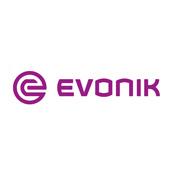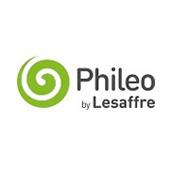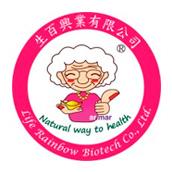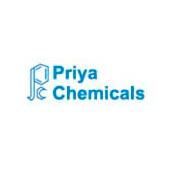Glutathione supplementation in poultry
Dear all, It is well accepted that glutathione per se is an integral constituent of the enzyme system in the body of birds, which is responsible for major biochemical processes necessary for the viability of the cells.
I wanted to know can this glutathione be given orally to the birds? If Yes, what doses have been recommended?
Kindly shed some light on the topic.
Glutathione in its reduced form (GSH) cannot be used to boost cellular/tissue levels of the anti-oxidant in living organisms, including poultry. The reason is that GSH in the extracellular environment is highly susceptible to oxidation to its oxidized (GSSG, and protein-bound or GS-protein) forms, and is biodegraded by gamma-glutamyl transferases particularly in those tisses with high activity of these enzymes. Instead, since cysteine is the rate-limiting amino acid for GSH synthesis, increasing the supply of this sulphur amino acid or its precursors through enteral or parenteral routes is one of the most effective strategies to enhance GSH levels in living organisms through the synthetic route. However, since cysteine is highly unstable in its reduced (CySH) form and is also toxic at high concentrations, it may not always be practical to use the amino acid as a supplement. Also, cysteine administration is associated with a reduction in tissue GSH consecutive to the production of hydroxyl radicals generated by the autoxidation of CySH into the oxidized form (CySS) of the aminao acid. Hence, the pharmacological use of CySH prodrugs (such as N-acetyl-cysteine (NAC), OTC and PTCA), CySH amino acid precursors (e.g. Methionine) and GSH esters is considered a more suitable choice to restore tissue GSH concentrations (Sen & Packer, 2000; Li et al., 2002; Oz et al., 2005). However, some of these are of limited oral bioavailability and may be toxic (Koch et al., 1994; Reid et al., 1994; Sen, 1997; Sen & Packer, 2000). Also, the tolerance of an organism toward an amino acid supply may be limited (Morand et al., 1997). Notwithstanding, Methionine is one cysteine precursor amino acid that has been successfully used to bolster cellular/tissue GSH levels (Hunter & Grimble, 1997; Morand et al., 1997).
Nutritional interventions involving the use of foods containing SAA-rich proteins have also shown to be preferable as a more natural strategy to bolster tissue glutathione concentrations. In this connection, the use of milk by-products, in particular, dietary supplementation with cyst(e)ine-rich whey proteins, has been shown to enhance cellular/tissue GSH levels (Bounous et al., 1989; Bounous et al., 1991; Bounous & Gold, 1991; Bounous et al., 1993; Kennedy et al., 1995; Zommara et al., 1998; Bounous & Molson, 1999; Lands et al., 1999; Micke et al., 2001; Ha & Zemel, 2003; Kent et al., 2003; Grey et al., 2003).
Also, use of anti-oxidants like vitamin C, vitamin E and some plant phytochemicals has been shown to be effective in bolstering cellular/tissue GSH.
However, I believe the most effective drug is N-acetyl-cysteine. On the other hand, the most effective nutritional product is whey protein (or whey protein concentrate).
Hope this is helpful.
Regards
Dr. DMN Mthiyane
North-West University, South Africa
kakade2000@gmail.com
Doc Mthiyane N acetyl cystene, cystamine, selenium, vitamin E are there but i want to know the supplementation of glutathione as such in poultry.
Doc Mthiyane Well thanks for your valuable comments. Glutathione as such is being used in humans. It's available. I am trying to find it out in case of poultry through literature as well.
I fully agreed to Mthiyane’s explanations that it is better not to use glutathione as such rather consider to use its
pre-cuser products (more natural way) in poultry as a source of animal protein for human consumption.
Although use of Glutathione (GSH) for human consumption have been documented well but for poultry industry a thorough research must be carried out to avoid negative consequences.
Glutathione is highly susceptible to oxidation in the extracellular environment so it would be unstable while supplementing through water / feed and may be also toxic if high concentration is taken by birds, so it may not be practical to use as a feed supplement to animals in my opinion.
Dear Dr. Meesam, what reason is to use GSH in poultry? Improving DWG and FCR? No reason, because GSH is antioxidant, and that's why it can decrease biological oxidation and generation of ATP. Electrone-transportation chain is free-radical depending process, no reason to limit it in poultry! Another matter are pets. Antioxidants can increase the life time of pets. About 2GSH=GSSG. There is enough GSH inside the birds. And it is possible to run GSSG back into reduced form (GSH) by special enzyme, glutatione reductase. But it is another story.
Dr. Fiodor S. Marchenkov Yes there is a natural pool in birds /poultry but the interesting fact is that we have not modified its genetics to that level as we have modified the growth or egg production. Intense selection had definitely caused a very good amount of stress. And maybe in some conditions, intrinsic production might not be in accordance with the requirement. That is the reason N acetyl cysteine, mithione, cystamine etc are supplemented. Thanks for your interest.
What is the reason? Because in humans it works, and not in poultry, or it would not be efficient? Excuse my ignorance, but I had also thought about it for use in salmon.





.jpg&w=3840&q=75)





.jpg&w=3840&q=75)







.jpg&w=3840&q=75)